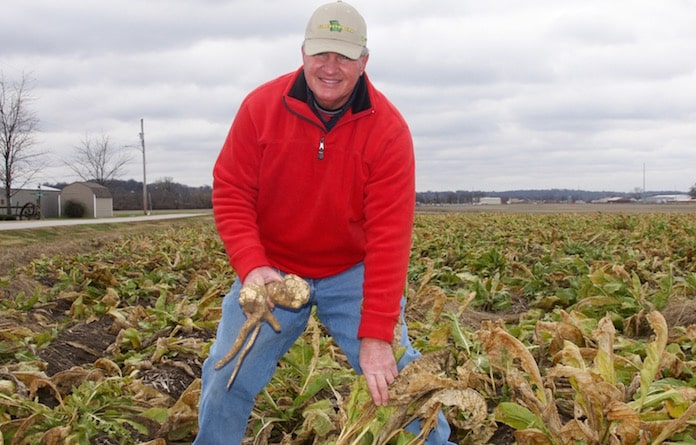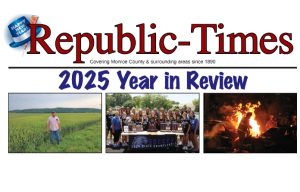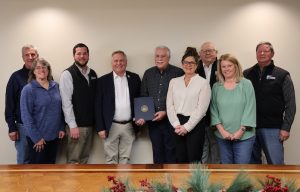Horseradish farmer takes root in Monroe County

Collinsville may be known as the Horseradish Capital of the World, but Monroe County is home to dozens of acres of the root vegetable as well.
Much of that is farmed by Barry McMillin, who farms about 1,400 acres of horseradish fields in Madison, St. Clair and Monroe counties.
His operation here is about 150-200 acres near Valmeyer, where he leases land from other farmers.
“There’s a lot of ground in Monroe County in the Bottoms that would be perfect for horseradish,” McMillin, a Caseyville resident, said. “It’s just the people with the background didn’t settle there. As long as it’s sandy soil, you can raise horseradish.”
German immigrants who moved to the Collinsville area brought their knowledge and cultural practices with them – including their love of horseradish.
Like in Monroe County, the Bottoms near that town offer some ideal ground for growing the bitter-tasting plant that is most widely used as a condiment, both by itself and as an ingredient in sauces and dressings.
Experts estimate the combination of history and fertile ground have led this area to grow 60-80 percent of the world’s horseradish, the majority of which comes from in and around Collinsville.
McMillin’s family has been in that business for years, as he is a third-generation horseradish farmer.
“There’s maybe just 10 of us raising it in Illinois, and there might have been 50 of us when I was a kid,” McMillin noted. “I probably grow 15 times what my grandfather grew and five times what my dad grew. We’ve had to get bigger to be competitive, and there’s just nobody else doing it.”
McMillin, who has been farming horseradish for over 40 years, said it is “a very labor-intensive crop.”
The process of raising the plant begins when harvesting the previous year’s crop, as there is no seed for horseradish.
Instead, farmers break the lateral roots off and plant those by hand after harvesting in the fall and spring.
There are very few chemicals approved for use on horseradish, and the vegetable does not like to have competition, so farmers spend much of the summer weeding their fields by hand.
“We cultivate just like they did in the ‘60s,” McMillin said.
Farmers start harvesting horseradish in late October, and harvesting continues until the ground freezes.
The plant then remains dormant throughout the winter. Harvesting resumes when the ground thaws out.
McMillin said he normally finishes harvesting – for which he uses a converted potato harvester – between March and early May, at which point the whole process stats again.
“It’s a constant, year-round (effort) working on them,” he said.
McMillin said his Monroe County crops are comparable to his Collinsville ones in terms of yield, which is part of why he is always looking for new people to lease land from here.
“We shoot for 4-4.5 tons an acre,” he said. “Four tons an acre is a pretty good average.”
The market for horseradish is small and specialized compared to some of this county’s staple crops, but it is fairly consistent.
“There’s just a select few places to sell it,” McMillin explained. “There’s a half dozen large processors that buy the majority of the root. Then there’s the grade of horseradish that we call No. 1 or USDA No. 1 grade, and that goes to smaller processors or people who repackage it and sell it on the store shelves. And a few restaurants actually buy a few hundred pounds at a time and do their own grinding.”






